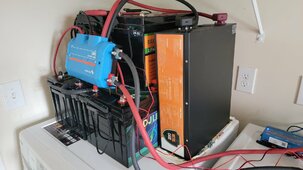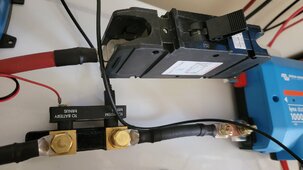I'd like to see a dielectric object ("insulating busbar") between breaker lug and shunt. Or a least a longer negative jumper.
Right now they can pivot to touch. Are those unprotected, straight from battery?
How about a panel?
Ideally, square knock-out in metal, with holes for the screws.
Maybe just two rectangular pieces, one for top and one for bottom. After mounting, cover with two more rectangles to keep fingers out.
Typical breaker panel bezels have twist-out pieces leaving a square hole, probably not the right dimensions.
I haven't used any bezel mount yet, only plug-on or DIN rail.






